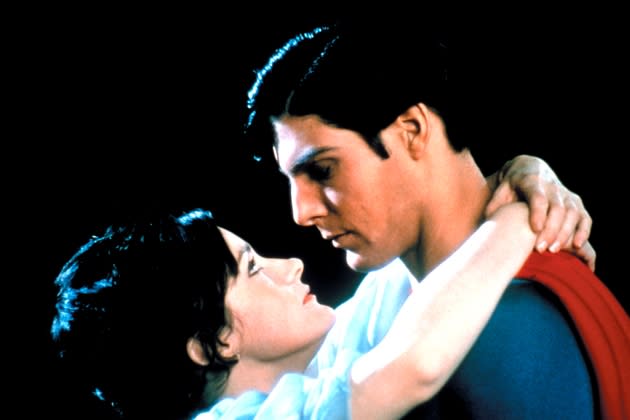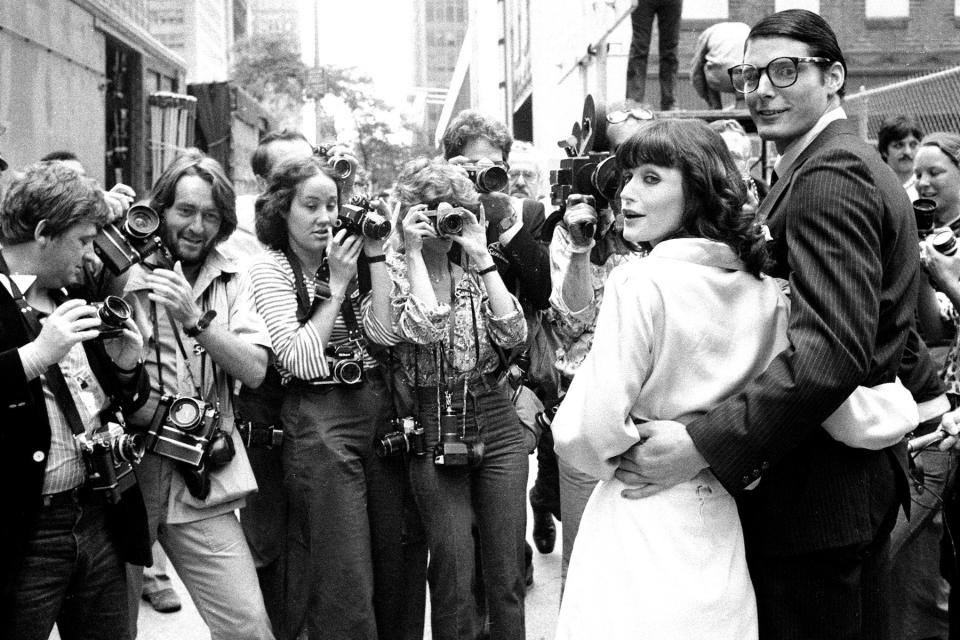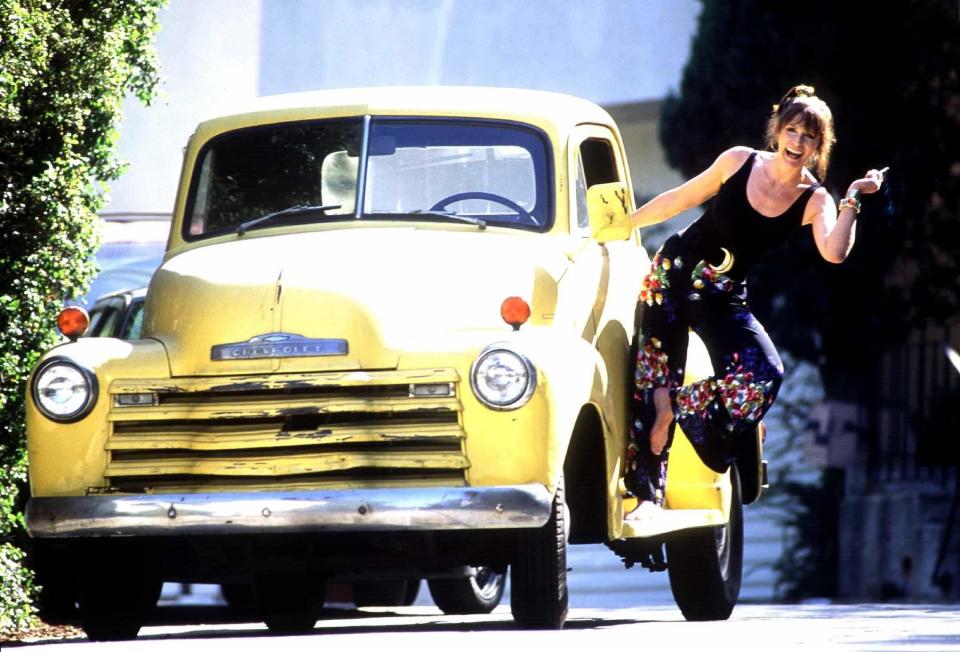Remembering Margot Kidder: Hollywood Superwoman and Box Office Queen

I’m an ‘80s baby, so I grew up with Margot Kidder as my Lois Lane, even though I’m not sure that I watched those Superman movies until much later in life. But the first time I saw Margot Kidder, the first time I really took her all in, was sometime in the ‘90s, when I watched 1974’s Black Christmas, the Canadian thriller that many consider to be the first true slasher flick.
I loved her from the very first frame.
More from Rolling Stone
'Barry' Plots Endgame With Most Action-Packed Episode of the Season
Netflix's Anna Nicole Smith Doc Casts Her As a Cunning Fame Seeker
Even then, at just over 25, Kidder had her own unique charm. Star power. Je ne sais quoi. Mischievous eyes, a cigarette smile, that bendy, too-skinny Mary Tyler Mooreframe that ‘70s clothes were made to fit. In Black Christmas, Kidder plays Barb, a drunk Canadian sorority sister who matches the film’s psychotic prank caller cuss-for-cuss until she gets too drunk and has to sleep it off. That’s when Barb is stabbed to death with a crystal unicorn. She was, of course, an instant gay icon. If there’s a way to fast-track queer canonization, death by crystal unicorn is surely it.
Kidder also died under the influence of alcohol. It surprised me. I thought, somehow, that heaven might just open up for her, Virgin Mary-style, and that Christopher Reeve would swoop down and fly her off to Krypton. Kidder, Anthony Bourdain, and Kate Spade all took their own lives within the same three-week period, and it felt very similar to getting stabbed with a crystal unicorn. The fun ones had left the party early, and that giant cocktail bar in the sky had suddenly gotten a lot more entertaining.
By the time Kidder died in 2018, she had been globally famous for nearly 40 years, and a working actress for 50. Personal and career highs included the birth of her daughter and two grandchildren, playing Lois Lane in four Superman movies, winning an Emmy Award, three delightfully short marriages, an arrest for protesting the extension of the Keystone Pipeline, and romances with global icons as disparate as Canadian Prime Minister Pierre Trudeau (Kidder was Canadian), comedian Richard Pryor, and director Brian De Palma. She vocally and ardently supported a number of causes, including LGBT rights, mental health awareness, literacy, and environmental rights, for which she starred in anti-fracking commercials, lived in a tent at Standing Rock, and campaigned for a number of environmentally-friendly political candidates.

And yet, when you type “Margot Kidder” into a news database, the results are almost exclusively from 1996, when Kidder had a breakdown and ended up crawling around in the bushes in a Los Angeles suburb, or from 2018, when Kidder took her own life after a long battle with addiction and bipolar disorder. Overwhelmingly, these are the kind of headlines you will find:
“Skidding career might have led to Kidder breakdown…”
“…Kidder killed herself by overdose…”
“Madness and Margot…”
“Lois Lane’s saddest story…”
“Margot Kidder is found dazed, dirty and fearful…”
“Booze, drugs, breakdowns… how girlfriend of Superman fell to Earth…”
Five years after her death, it’s time to change that narrative. When comparing Kidder to the other movie stars of her era – stars like Robert Redford, Meryl Streep, Sigourney Weaver, Harrison Ford, Dustin Hoffman, Jane Fonda, and Meryl Streep – almost all of them are still working or thought of with the incandescent glitter of superstardom firmly glue-sticked to their names. Kidder has not been afforded that same kind of legacy.
The thing that should have been widely reported on – both at the time and at the time of her death – was her status as queen of the box office. For starters, Kidder was the star of the highest-grossing film at the domestic box office in two separate calendar years: Superman in 1979 and Superman II in 1981. For this achievement, she’s matched only by her co-star Christopher Reeve, the stars of the Star Wars films, Batman and Batman Returns’ Michael Keaton, those who appeared in both Avatar movies, and several key players from the Marvel Cinematic Universe. Shout out to the T-Rex from 1993 champ Jurassic Park; if it was indeed the same dino that appeared in that film and in Jurassic World, 2015’s top earner, then she too makes the list.
While the aforementioned statistic puts Kidder in elite company, there is another box office metric where Kidder stands alone. In 1979, Kidder was a lead (I would argue the lead) in both Superman and the second biggest earner that year, The Amityville Horror. Our current method of analyzing the box office has been around since the mid-1970s and, in that time, no other performer has achieved this feat. The closest comparison I could find happened nearly 40 years later, in 2018, when Chadwick Boseman starred in top earner Black Panther and then appeared in the second place Avengers: Infinity War. However, Boseman didn’t have a lead role in Infinity War (even if he obviously should have).

It’s easy to look at the box office numbers from back in 1979 and mistakenly assume that the films’ measly grosses diminish this achievement. But if you adjust Superman and The Amityville Horror’s grosses for inflation, you’ll find that Superman earned over $500 million in today’s dollars (over a billion worldwide), while The Amityville Horror grossed over $300 million.
When going by release date rather than in-year gross, Kidder starred in the second-highest-grossing films of both 1978 and 1979 and then in the third-highest-grossing film of 1980. While not as shiny of an achievement, this three-year string of success shows exactly where Kidder was in the Hollywood hierarchy.
To get a sense of how big of an achievement Kidder’s box office wins were, I turned to Gitesh Pandya, founder and editor of the legendary Box Office Guru, who has been tracking the box officesince 1997. Pandya says, “Starring in the highest-grossing film of the year is quite a difficult accomplishment, but to be in the top two films in any given year is unheard of.”
If this story were being told in the usual manner of Margot Kidder tales, we might guess that she didn’t stay on top of the box office because of her well-known struggles. But the truth is that three years is a long time in Hollywood. You may recall times in which stars as varied as Bruce Willis, Angelina Jolie, Meg Ryan, Mike Myers, Cameron Diaz, and Jim Carrey were at the top of the box office hierarchy, and their stints rarely extended for a long period of time. Some unicorn actors, like Tom Cruise and Sandra Bullock, have had multiple hot streaks, but even the hottest of those is almost always interrupted by slower periods and haven’t seen a peak this lofty.
When I think of Kidder’s achievement, the nearest examples I can think of are key franchise players who mixed in the occasional non-franchise film (or a second franchise) in the same genre. Actors like Scarlett Johansson, Chris Pratt, Robert Downey Jr., Zoë Saldana, Karen Gillan, and Dwayne Johnson serve as examples. In 1979, though, neither Superman nor The Amityville Horror was a sure bet, and they certainly weren’t franchises yet. Plus, Kidder was tasked with performing in two very different genres.

Even more impressive is that Kidder wasn’t a huge star when she reached the top of the box office. She wasn’t a nobody, but she’d spent the years leading up to Superman as a stay-at-home mother, and her best-known credits were Brian De Palma’s bonkers 1972 psychological horror flick Sisters and the aforementioned Black Christmas.
Notable beginnings, but certainly not auspicious.
There’s a scene in Superman where Kidder’s nervous Lois Lane is on her gorgeous Manhattan balcony, wearing a ton of eyeliner and a lovely, billowing powder blue gown. She’s about to interview Superman, so she pours herself a heavy glass of white wine and promptly chugs it. Superman arrives on her balcony and she giggles, saying, “This old thing?” about her stunning attire. She lights a cigarette with a challenging grin. She is beautiful. She is rich. She’s relatable. She’s wonderful. I dreamed that I looked like that with a glass of wine in my hand (I didn’t). This is how we should remember Margot Kidder.
She was such a movie star. In 1979, she was the movie star. She was beautiful, unique, relatable, mesmerizing. She was exactly who a Christopher Reeve-hot-alien hero with a heart of gold would fall in love with. She had Bette Davis eyes, a Julia Roberts smile, a Jennifer Lawrence rasp, and Harrison Ford charm. And, like those stars, she had box office receipts. In 1979, she had more.
Of course, Margot Kidder had to fall to Earth. No one had ever flown higher.
Best of Rolling Stone


